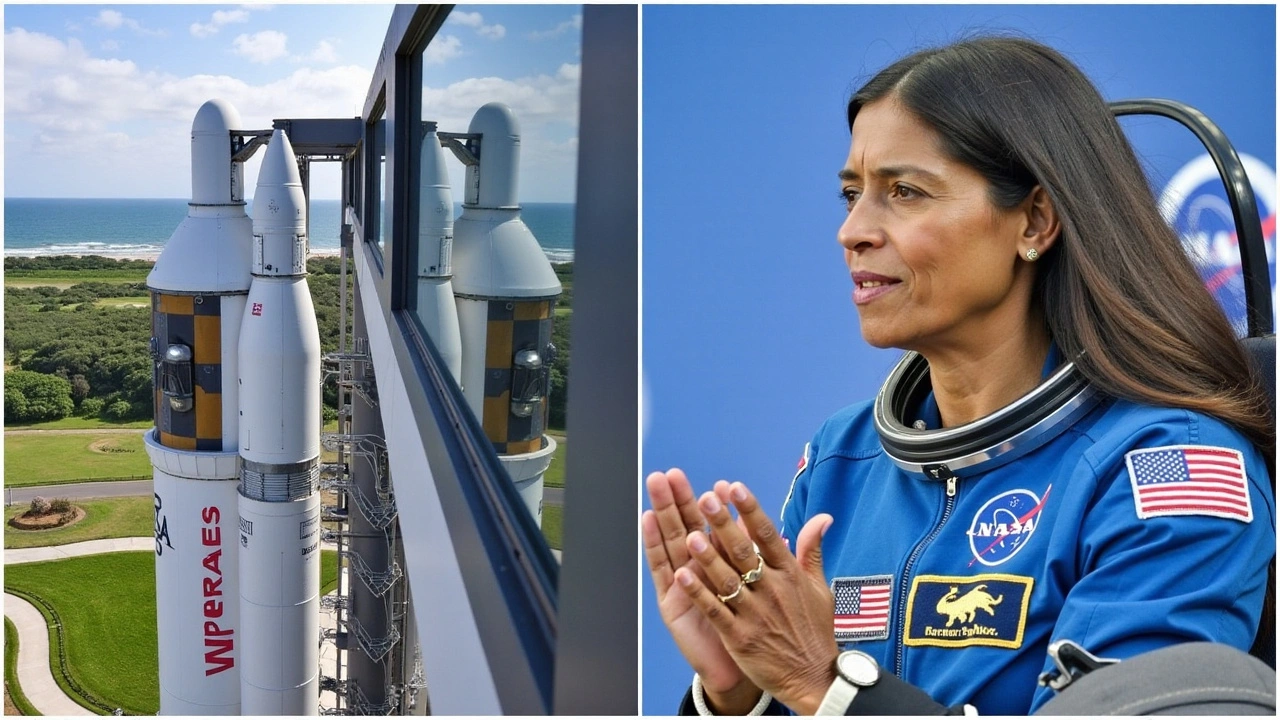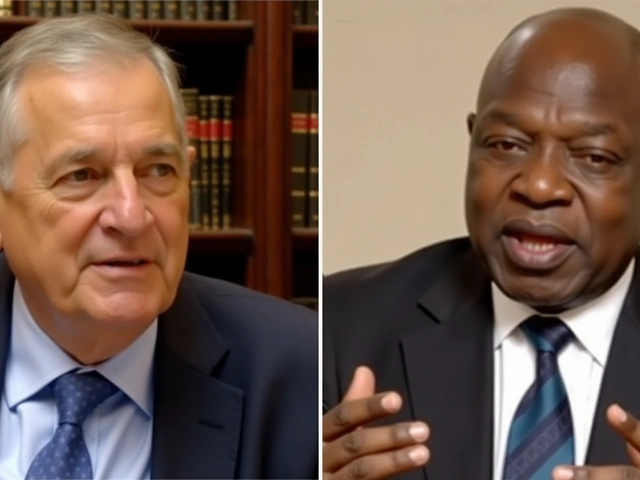
SpaceX Crew-9's Historic Launch: Rescuing Astronauts from Extended ISS Mission
In a significant space endeavor, SpaceX's Crew-9 mission successfully launched to rescue two NASA astronauts stuck aboard the International Space Station (ISS). The mission aims to bring back astronauts Sunita Williams and Butch Wilmore, who found themselves stranded due to technical problems with Boeing's Starliner. Originally meant to be a short trip, their return has been delayed by over eight months.
The troubles began with Boeing’s Starliner, which was supposed to carry the astronauts for a brief mission. However, technical issues like thruster malfunctions and helium leaks forced NASA to delay their return. The situation became untenable, and thus, SpaceX was called upon to execute the rescue mission. Sunita Williams, taking command of the ISS, has managed operations, awaiting the arrival of the rescue team.
Extended Stay Turns into Command Mission for Williams
Williams and Wilmore were initially assigned a simple week-long mission this June as part of the Boeing’s inaugural crewed Starliner flight. But several fundamental flaws, including thruster issues and helium leakage, rendered the Starliner too dangerous. NASA had to delay the return mission profoundly amid these troubles, prolonging their stay aboard the ISS. The stranded astronauts have seen their short mission stretch into an extended stay of more than eight months. Despite these obstacles, Williams assumed command of the ISS, ensuring the safety and smooth operation of the space station as they awaited rescue.
With their long stay aboard, Sunita Williams, known for her resilience and leadership, took charge of the orbital lab, becoming a beacon of hope for the crew. As the mission stretched on, both Williams and Wilmore demonstrated immense mental and physical fortitude, operating under unexpectedly challenging conditions. They managed to maintain the ISS’s routine functions, conducting scientific experiments, ensuring equipment maintenance, and, most importantly, keeping morale high. It’s a testament to their unwavering commitment to the mission and their steadfast adherence to NASA’s rigorous training.
SpaceX to the Rescue
The launch of SpaceX Crew-9 was a momentous event, marking yet another significant milestone in the collaboration between SpaceX and NASA. Despite the risks and challenges, the mission lifted off from Launch Complex 40 at Cape Canaveral, which traditionally was a site for satellite launches. SpaceX took command of this site nearly two decades ago and transformed it, showcasing its versatile capabilities by launching its first crewed mission from the complex.
Unlike previous missions where the Crew Dragon capsule would carry four astronauts, this particular mission saw only two astronauts, NASA's Nick Hague and Russian cosmonaut Alexander Gorbunov. This adjustment was intentional, designed to accommodate Wilmore and Williams on their return journey, undisturbed by external disruptions from other missions. NASA’s prudent decision of reducing the size of the newly launched crew was critical, ensuring space for the rescued astronauts on their homeward journey. The rescue mission became a strategic choreographed dance, orchestrating not just a pick-up but a whole reassignment of planned missions ensuring no disruptions while focusing entirely on the safe return of the stranded duo.
Technical Hurdles and Safety Concerns
Boeing's Starliner, despite its ambitious outset, encountered a series of technical hiccups that led to rescheduled missions and intense scrutiny. The culmination of these issues led to NASA sidelining the craft and delegating the rescue mission to SpaceX. The technical snags were not just minor bugs; they were substantial flaws including compromised thrusters and helium leaks, forcing NASA to deem the situation too risky for the astronauts' return during the planned window.
These technical hitches weren’t Boeing's first stumble. Earlier, in 2019, an uncrewed test flight failed, marking a significant setback for the Starliner program. The Starliner’s return journey without astronauts signified deeper issues needed to be addressed. The culminating failures brought in sweeping changes within Boeing's management, seeking to realign its ambitious goals with safer, more reliable mission outcomes. Boeing saw a leadership reshuffle, with a new chief at the helm of the defense and space division brought in to steer the program back on course.
The Human Side of the Mission
The human aspect of this mission underlines the essence of any space endeavor. Sunita Williams and Butch Wilmore became unintended tenants of the ISS, extending their stay beyond expectations. Their journey highlights the resilience and adaptability crucial for space missions. The delay, induced by safety measures, showcases the intricate balance between achieving mission-objectives and ensuring astronaut safety remains paramount. Their prolonged mission becomes a tale of endurance, teamwork, and cushioned adaptability, echoing the realities of space exploration where uncertainty is a given.
Williams, with her notable leadership, and Wilmore, with his adaptive skills, navigated through the extended mission by maintaining operational integrity and high spirits. Their stewardship provided a platform for the newly arrived astronauts, ensuring a smooth takeover when the time came. As they swapped roles onboard, the transition marked a well-timed relay, capturing the essence of collaborative space missions.
NASA’s Forward-Looking Strategy
The launch and subsequent operations of SpaceX Crew-9 highlight NASA’s adaptive strategies to unforeseen challenges. Removing NASA astronauts Zena Cardman and Stephanie Wilson to make room for Wilmore and Williams underscored NASA’s real-time decision-making. Both Cardman and Wilson, although omitted from this mission, remain at the forefront of NASA’s future missions, signifying their critical roles in ongoing space endeavors.
NASA’s strategic pivot to employ SpaceX for the rescue operation reiterates its confidence in SpaceX’s dependable mission architecture. The collaboration encapsulates a milestone underscoring how partnership dynamics shape NASA’s forward trajectory in space exploration. Boeing’s hurdles, while a setback, open chapters to critical learning experiences, refining future mission approaches.
The Road Ahead
Boeing’s next steps focus intensively on addressing Starliner’s technical issues, ensuring such setbacks are circumvented in future missions. Realignments at management levels and tactical introspections anchor Boeing’s rededicated efforts to bring about safer, more reliable mission outcomes. With this rescue operation, SpaceX further cements its position as a pivotal player in NASA’s manned missions, consistently showcasing its reliability and technical prowess. Crew-9’s mission underlines the adaptability and dynamic decision-making shaping modern-day space endeavors, ensuring astronaut safety and mission success.
SpaceX Crew-9 stands as a testament to human collaboration, technological ingenuity, and the resilient human spirit. As Williams and Wilmore prepare to return, their journey reiterates the unpredictable but unwavering path of space exploration. This mission isn’t just about moving astronauts; it’s a vivid narrative of endurance, leadership, teamwork, and the perpetual quest to push boundaries in our celestial quests.
11 Comments
Write a comment
More Articles

South African Businessman Johann Rupert Takes the Crown as Africa's Richest Man, Dethroning Aliko Dangote
Johann Rupert from South Africa has overtaken Nigeria’s Aliko Dangote to become Africa’s richest man. Rupert's net worth has skyrocketed from $1.9 billion to $14.3 billion, making him the 147th wealthiest person globally. This significant surge places him well ahead of Dangote, who held the title for years.

Ballon d'Or 2025 Odds: Ousmane Dembele Becomes Hot Favourite
Betting markets have pushed Ousmane Dembele to 1/3 odds for the 2025 Ballon d'Or, making him the clear front‑runner. Barcelona teen Lamine Yamal sits as the main challenger at 9/4, while other stars like Raphinha and Mohamed Salah trail further behind. Dembele's form with PSG and the rise of new talent shape a thrilling race ahead of the October ceremony.

Afghanistan Clinches Second ODI Victory Over South Africa in Sharjah
Afghanistan has taken a commanding 2-0 lead in their three-match ODI series against South Africa following a triumph in Sharjah. Highlights include their decision to bat first, the return of South African captain Temba Bavuma, and stellar performances by Rahmanullah Gurbaz and Rashid Khan. The pitch, described as hard and flat, posed unique challenges for both teams.
naveen krishna
September 30, 2024 AT 00:33Wow, the crew’s patience really paid off – it’s amazing to see SpaceX step in and get things moving again. The ISS team kept the station humming while waiting for a ride home, and that kind of teamwork is exactly what keeps the whole program alive. It also shows how flexible NASA can be when commercial partners are ready to lend a hand.